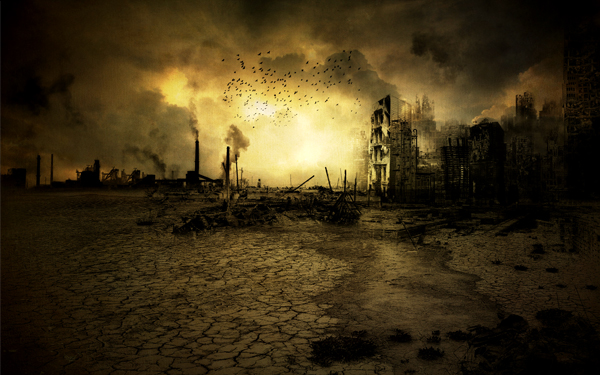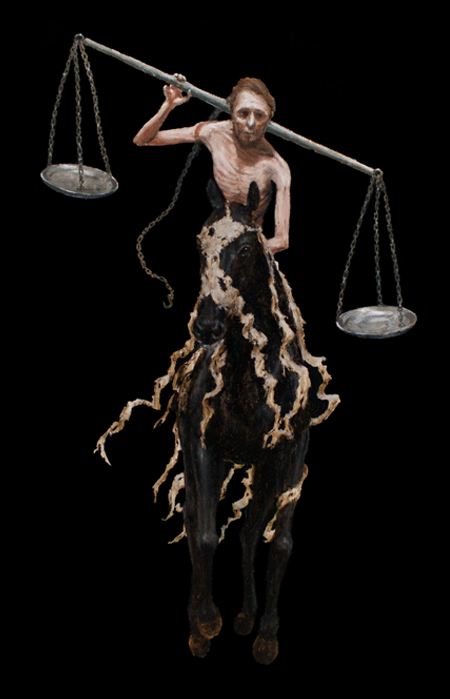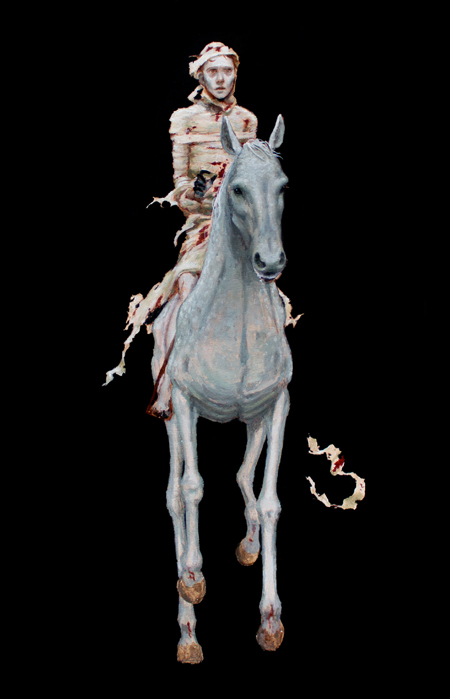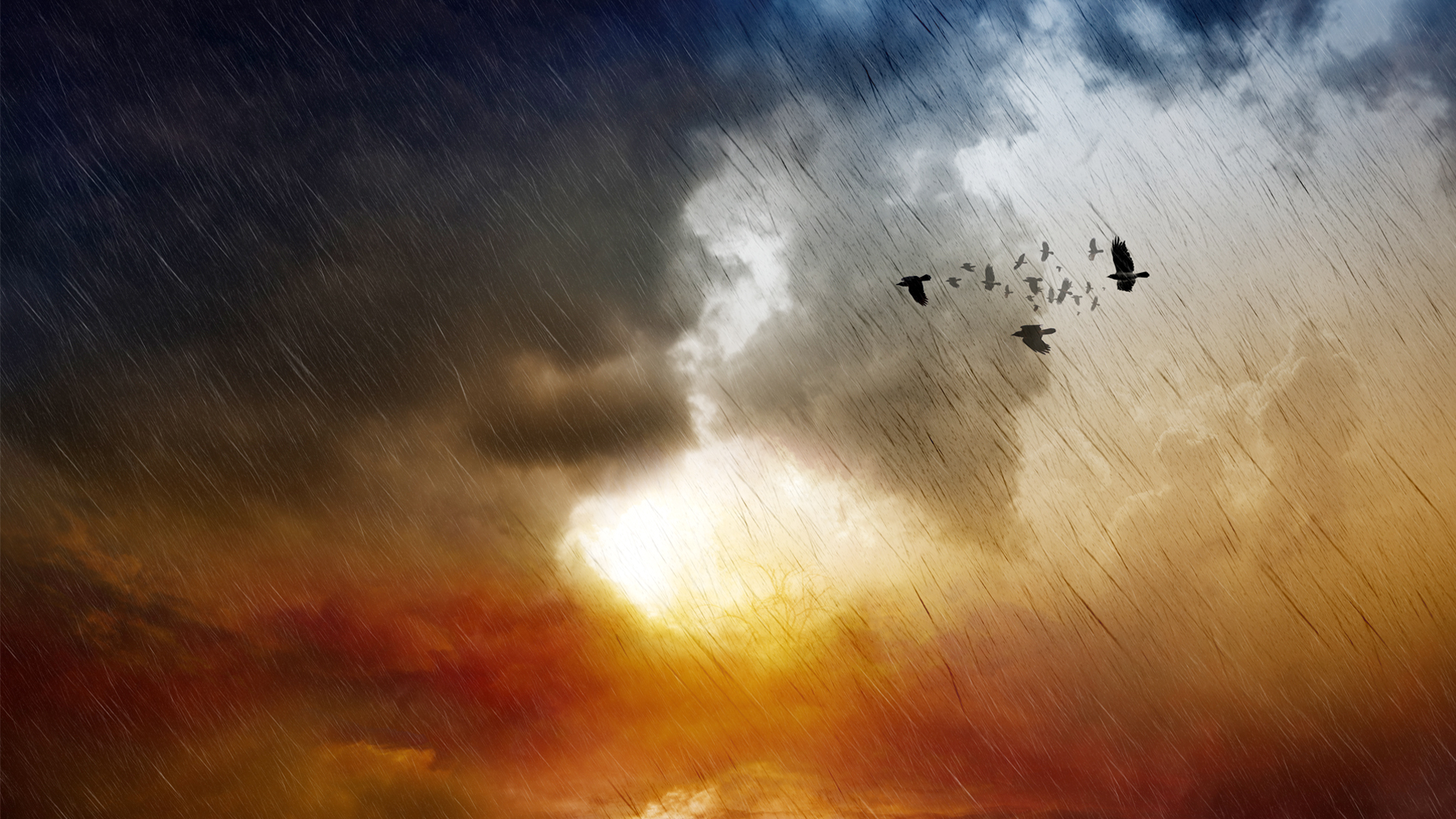Bad News, Good News
Part 1 of this two-part series focused on the ominous riders of the white and the red horse. We now examine the two remaining horsemen as well as the good news that lies beyond their destructive ride.
In Part 1 we looked at the first two of the four horses mentioned in the book of Revelation, or the Apocalypse. We noted that there has been much confusion over the many strange images and symbols in the book, and we showed that the key to understanding their identity and significance for today is to listen to the teachings of Jesus of Nazareth as He explained coming world conditions about two thousand years ago.
Having told His disciples that the Jerusalem temple and its surrounding area would be destroyed, they understandably thought He must be talking about the end of this era of human history—the end of the world as they knew it, and the establishment of the kingdom of God. Later some of them said to Him in private, “Tell us, when will these things be? And what will be the sign of Your coming, and of the end of the age?” (Matthew 24:3).

His answer began with a warning not to be deceived by difficult world conditions, thinking such are automatically signs of the end. He went on to show that false messiahs would come first and seek to usurp His role in resolving world problems according to God’s plan. They would claim to be God’s gift to their people. There have been many such imposters over the centuries. We saw that these men have misled millions of their own followers and have inevitably failed. In parallel with the book of Revelation we saw that the first rider on a white horse represents these false messiahs.
Next came a rider on a red horse. Jesus showed His disciples ahead of time that this horseman represents war. War has preoccupied human beings from the start of human history. The red horse often rides in the wake of the white horseman’s bad policy, wrong ideology and deceit. So it has been across the two thousand years since Jesus said, “You will hear of wars and rumors of wars. See that you are not troubled; for all these things must come to pass, but the end is not yet. For nation will rise against nation, and kingdom against kingdom” (Matthew 24:6–7). War is certainly an ongoing part of our present human condition.
Dwindling Food Supplies
The red horseman of war can lead directly to a third devastating world condition: “When He opened the third seal, I heard the third living creature say, ‘Come and see.’ So I looked, and behold, a black horse, and he who sat on it had a pair of scales in his hand. And I heard a voice in the midst of the four living creatures saying, ‘A quart of wheat for a denarius [a coin that was about a day’s wages], and three quarts of barley for a denarius; and do not harm the oil and the wine’” (Revelation 6:5–6).

Artwork by Randall Fischer
As we’ve seen already, Jesus had explained to His disciples that false messiahs and their deceptions and far-reaching wars would become two enduring global conditions. Now, again in parallel with the Apocalypse, He prophesied: “And there will be famines . . . in various places” (Matthew 24:7). The black horse represents catastrophic shortages of basic foodstuffs.
It’s well established that as war takes its toll, food supplies dwindle. People are often unable to buy what little remains. War causes disruption of food production and failure of distribution chains. Then theft and desperation spread quickly as society begins to break down.
In the scene depicted in Revelation 6, a denarius would buy only a small amount of wheat for human consumption. It was generally more valuable than barley, which was mostly used for animal feed, hence three times the amount of barley for a denarius. The comment about not harming the oil and wine may be ironic. If suppliers were producing items that would get the most profit while cutting back on basics, they could make famine worse and drive up the price of staple foods. Wine and oil could be much more lucrative—almost luxury goods that the wealthy could still buy while also paying higher prices for staples.
Crippling food shortages certainly occurred throughout the empire as the Roman superpower slowly collapsed under its own weight and the attacks of invading tribes.
Many times over the centuries the black horseman has taken his toll. In 19th-century China, he appeared in sequence after the white and red horses, when the false messiah Hong Xiuquan promoted himself as savior. He fought his own countrymen for 14 years, during which time at least 20 million are thought to have died, many from famine.
Less than a century later, in the late 1920s, Joseph Stalin went to war with some of his own citizens, launching an attack on Soviet farmers. He was determined to wipe out the Kulaks as a class. This led to a catastrophic famine as they were driven out, resulting in the death of millions of people.
“Everybody knows of the 6 million of the Holocaust. Nobody knows of the 6 million of [Stalin’s] Terror-Famine.”
In a similar move, the communist leader Mao Zedong declared a war of sorts on his people. It was a violent attempt to advance China industrially on the backs of the populace. Between 1958 and 1961, Mao ordered the nation’s agricultural sector to produce as much food as possible. This was to be sent to the Soviet Union in exchange for industrial help. But false claims were made about the country’s improving productive capacity, and critically needed foods were exported. By 1961, farm laborers themselves were being forced into industrial production. Along with the diminished agricultural workforce, bad weather and poor harvests resulted in the death of 30–40 million from starvation and overwork. Mao refused to accept that his policies had caused the worst famine in Chinese annals, if not in world history. Instead, he blamed those party officials who criticized his ideas.
Tragically many today, adults and children alike, still die from hunger-related causes including famine. Sometimes the precursor is a lack of water. The earth has a fixed amount of water, of which 97 percent is saltwater and only about 3 percent is fresh. Of that 3 percent, only one third is accessible; the rest is trapped in ice and glaciers. Agriculture alone takes up 70 percent of the freshwater available. Added to this, the three largest countries by population—China, India and the United States—are engaged in unsustainable water use in grain-growing areas. Freshwater is currently under threat for almost 80 percent of the world’s population. Without adequate water supplies, food cannot be produced. Population growth and growing prosperity are exerting demands on resources that cannot be withstood.
Complicating matters, meat consumption is increasing, and industrialized meat production is far more water-intensive than grain production. This means that without radical changes in eating patterns, the already high amount of water needed for agriculture will only increase.
From Famine to Pestilence
The white, red and black horsemen of widespread deception, war and famine provide the lead-in to the next devastating condition. Beyond the catastrophes brought about by the first three riders comes the next: “When He opened the fourth seal, I heard the voice of the fourth living creature saying, ‘Come and see.’ So I looked, and behold, a pale horse. And the name of him who sat on it was Death, and Hades followed with him” (Revelation 6:7–8a).

Artwork by Randall Fischer
We saw earlier that in Matthew’s Gospel, some of Christ’s disciples came to Him on the Mount of Olives looking for information about the end of this age and the beginning of the kingdom of God. Now He gave a fourth condition, which like the others signals only the beginning of the process that leads to the end: He said, “And there will be . . . pestilences . . . in various places” (Matthew 24:7).
This parallels the fourth horseman’s ride. His horse is grey-green like the color of so many who are sick and dying. The rider’s name is Death, the demise that comes from pestilences, epidemics and plagues.
Opportunistic infections and sickness often come in the wake of war and famine. Malnutrition means that the immune system is suppressed in a way that is very like the collapse of the body under a full-blown attack of AIDS or Ebola. Illnesses that are rare find a foothold that healthy people would usually resist. Under famine conditions, mortality rates may be much higher than in normal times. And during and after wars, epidemics can spread quickly. In Europe’s Thirty Years’ War during the 1600s, typhus killed millions before it was halted. It returned with a vengeance in World War I, when millions more died in Russia, Poland and Romania. At the end of the same war in 1918–19, the Spanish flu may have killed as many as 100 million across the globe as soldiers returned home.
“In the course of the Thirty Years War (1618–48) the German lands lost a large proportion of their population, perhaps as much as 40 per cent, through wars and their consequences such as famine and epidemic disease.”
In John’s apocalyptic vision, the pale horse’s rider, Death, is accompanied by Hades—the grave, the last resting place of the terminally ill. Then comes this summary statement about what the four horsemen will have caused in total in terms of human life: “And power was given to them over a fourth of the earth, to kill with sword, with hunger, with death, and by the beasts of the earth” (Revelation 6:8b). In combination the riders of the four horses bring death to 25 percent of the world’s population. It’s a sickening statistic, even more so when you realize that much of it comes at man’s own hand.
The End of the Ride
The Four Horsemen of the Apocalypse began to ride some two thousand years ago, and they continue to this day. Yet despite all the death and destruction they bring, there is good news at the end of their terrible journey.
The same Jesus of Nazareth, who provided His disciples with the key to understanding the meaning of the mysterious four riders ahead of the vision John saw and recorded in the Apocalypse, will also come to put an end to their destructive power. As the book of Revelation also shows, the returning true Messiah will halt the white horseman’s final ride. He will replace the ultimate false messiah, end deception, and establish a society based on truth. John recorded what he saw of the conclusion to the battle that the false messiah (known as “the beast” in Revelation) will fight against the returning Christ: “And I saw the beast, the kings of the earth, and their armies, gathered together to make war against Him who sat on the horse and against His army. Then the beast was captured, and with him the false prophet who worked signs in his presence, by which he deceived those who received the mark of the beast and those who worshiped his image. These two were cast alive into the lake of fire burning with brimstone” (Revelation 19:19–20).
As for the warring red horseman, Christ will eradicate conflict and violence as the Prince of Peace. By returning, He will put an end to global war and will begin to correct the problem of man’s warlike nature. The prophet Micah spoke of this time of world peace and security: “He shall judge between many peoples, and rebuke strong nations afar off; they shall beat their swords into plowshares, and their spears into pruning hooks; nation shall not lift up sword against nation, neither shall they learn war anymore” (Micah 4:3). Human beings will no longer be taught that war is the way to resolve problems between nations. Weapons of destruction will become tools for peace. The armaments industry will be no more. Military training schools will cease to exist. And peace will become a reality across the globe. Christ will see to it: “He makes wars cease to the end of the earth; He breaks the bow and cuts the spear in two; He burns the chariot in the fire” (Psalm 46:9).
In a radically changed world, the impact of the black horseman’s ride will also be quickly overcome. One of Christ’s other names is Yahweh-Jireh, “the faithful God who provides.” Consistent with this title, He will return to end world hunger by providing rainfall in the right seasons, plentiful water supplies, and an abundance of food. The water and food security so many demand today will be a by-product of Christ’s godly government of justice and equity. Water will be made available where needed, as Isaiah shows: “When the poor and needy seek water, and there is none, and their tongue is parched with thirst, I the Lord will answer them; I the God of Israel will not forsake them. I will open rivers on the bare heights, and fountains in the midst of the valleys. I will make the wilderness a pool of water, and the dry land springs of water” (Isaiah 41:17–18, English Standard Version).
Jesus Christ is also Yahweh-Rohi, “the faithful God who shepherds.” It was Jesus of Nazareth who said, “I am the good shepherd” (John 10:11). It’s the black horseman of humanly caused famine that destroys and kills. It’s the true Christ who brings abundant life. Right agricultural practice will lead to the blessings of overwhelming abundance: “‘Behold, the days are coming,’ says the Lord, ‘when the plowman shall overtake the reaper, and the treader of grapes him who sows seed; the mountains shall drip with sweet wine, and all the hills shall flow with it’” (Amos 9:13).
“God will wipe away every tear from their eyes; there shall be no more death, nor sorrow, nor crying. There shall be no more pain, for the former things have passed away.”
At that time, epidemic disease and sickness in general will give way to another aspect of the work of Christ. He is also named Yahweh-Rapha, “the faithful God who heals.” As far as death from catastrophic disease and its silent partner, the grave, are concerned, they will yield to the coming Christ. Jesus said, “I am He who lives, and was dead, and behold, I am alive forevermore. . . . And I have the keys of Hades and of Death” (Revelation 1:18). In other words, He has the power to overcome mankind’s greatest enemies, death and the grave. As He said, “I am the resurrection and the life” (John 11:25). Christ came to the earth so that humanity could become part of God’s family and live forever. He explained, “I have come that they may have life, and that they may have it more abundantly” (John 10:10).
Finally the Four Horsemen will be no more, and the effects of their destructive ride across the earth will be a remnant of a past to be quickly forgotten. All of the suffering they caused will be displaced by a new world and a new government that will bring global peace. This is pictured on an eternal basis by these concluding words in the book of Revelation (22:1–2): “Then the angel showed me the river of the water of life, bright as crystal, flowing from the throne of God and of the Lamb through the middle of the street of the city; also, on either side of the river, the tree of life with its twelve kinds of fruit, yielding its fruit each month. The leaves of the tree were for the healing of the nations.”

